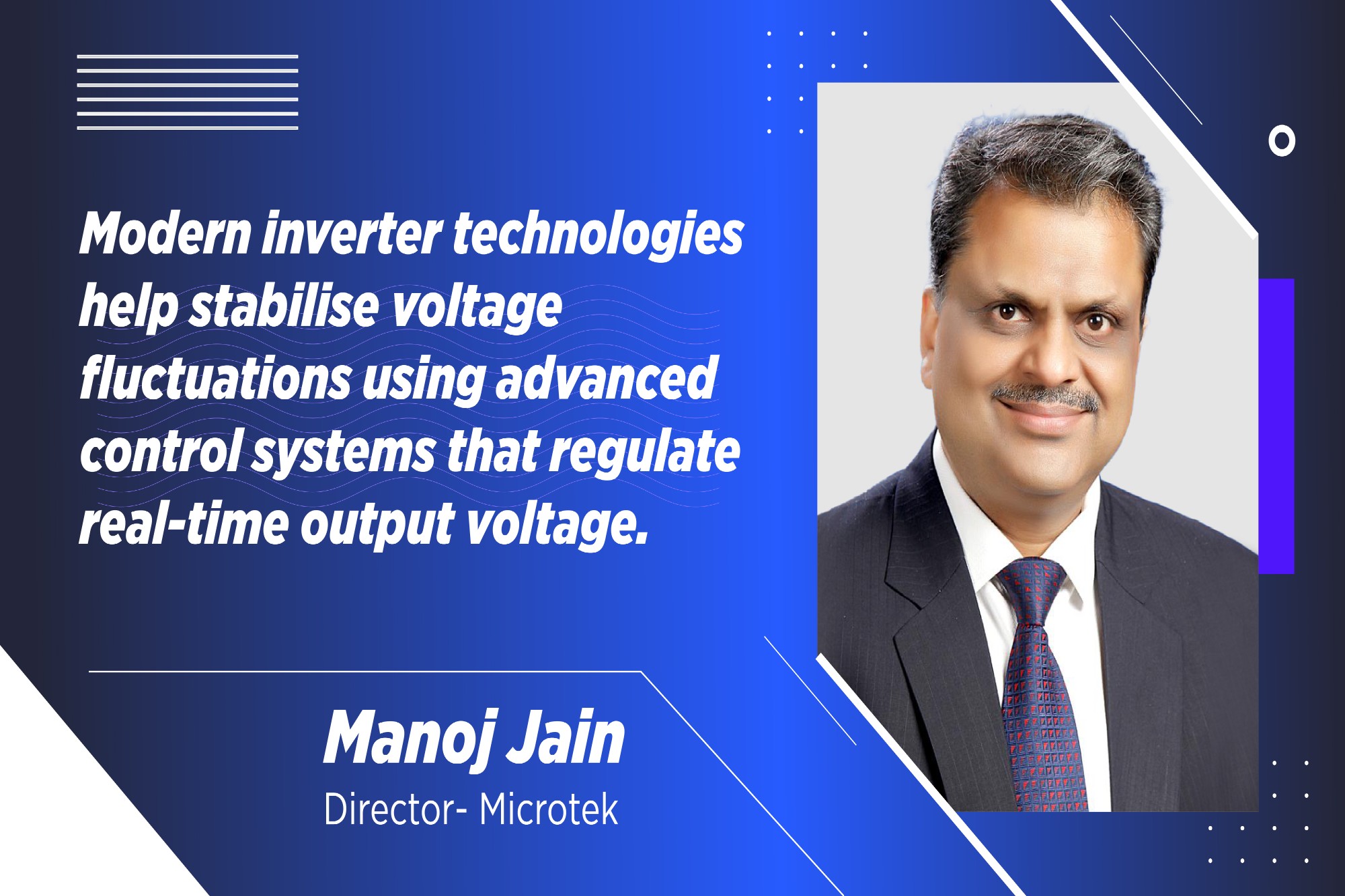Microtek Luxe WiFi inverter helps in real-time power management
By Staff Report May 15, 2025 5:21 pm IST
By Staff Report May 15, 2025 5:21 pm IST

These AI-driven inverters enable remote monitoring and control via mobile app, allowing users to track performance, receive alerts, and adjust settings in real-time. Predicting load variations and smoothly managing transitions improves substation reliability.
Inverter technology has gained momentum in recent years, aligning with the shifting energy landscape. These newly advanced devices are enhancing the efficiency and reliability of substations, particularly those evolving to integrate renewable energy. From power factor correction to AI-driven control, the inverter innovations support voltage stability, reduce energy losses, and enable smarter power management. Manoj Jain from Microtek highlights the growing role of inverters in modernising and stabilising power infrastructure. Let us know more.
How do hybrid inverters and power factor correction techniques collectively enhance power systems’ substation efficiency and grid stability?
Hybrid inverters enhance the efficiency of substations that rely on grid and solar power by intelligently managing multiple energy sources. They prioritise solar energy when available, reducing grid dependency and lowering operational costs. During low solar generation or grid outages, stored energy from batteries can be utilised, ensuring an uninterrupted power supply. Hybrid inverters also support peak shaving by using battery power during high-demand periods, easing stress on the grid. Additionally, they enable real-time energy monitoring, optimise load distribution and help maintain voltage and frequency stability. By seamlessly switching between solar, battery and grid power, hybrid inverters improve reliability, reduce energy losses and support more sustainable and cost-effective substation operations.
Moreover, Power Factor Correction (PFC) techniques in inverters enhance grid stability by improving power quality and reducing energy losses. PFC reduces reactive power by aligning the input current with the input voltage, easing the load on generators and transmission systems. It also minimises harmonics, ensuring cleaner voltage waveforms and better performance of grid-connected devices. Improved power factor leads to better voltage regulation and more efficient energy use. Additionally, PFC-enabled inverters act like resistive loads, simplifying load balancing and supporting frequency stability.
How do modern and AI-driven inverters work together to enhance voltage stability and intelligent power management in electrical systems?
Modern inverter technologies help stabilise voltage fluctuations using advanced control systems that regulate real-time output voltage. They continuously monitor input and output conditions and adjust quickly to maintain a stable voltage supply, even when unstable grid conditions or loads vary. Features like automatic voltage regulation (AVR), pulse width modulation (PWM) and dynamic load response allow inverters to deliver consistent voltage levels. Some inverters also integrate energy storage, supplying additional power during voltage dips. Overall, modern inverters ensure smoother power delivery, protect sensitive equipment and enhance the reliability of electrical systems under varying conditions.Additionally, AI-driven inverters, like the Microtek Luxe WiFi model, enhance real-time power management by continuously analysing usage patterns, load demands and grid conditions. These smart inverters use artificial intelligence to make instant decisions, such as optimising power flow between the battery and grid to ensure an efficient and uninterrupted power supply. The Luxe WiFi inverter enables remote monitoring and control via its mobile app, allowing users to track performance, receive alerts and adjust settings in real-time. By predicting load variations and managing transitions smoothly, AI-driven inverters help reduce energy waste, maintain voltage stability and improve battery performance.
What are the key investment trends in advanced inverter technologies driving sustainable substation performance and grid integration?
Recent investment trends in advanced inverter technologies are focused on enhancing substation performance through smarter, more efficient systems. Key areas include grid-forming inverters, which improve voltage and frequency stability and the adoption of silicon carbide (SiC) technology for higher efficiency and compact designs. Investments are also directed toward digitalisation and AI integration for real-time monitoring and predictive maintenance. Modular inverter designs are gaining popularity for their scalability and ease of maintenance. These advancements enable substations to integrate renewable energy sources better, reduce energy losses and improve grid resilience, supporting the global shift toward smarter and more sustainable power infrastructure.
We use cookies to personalize your experience. By continuing to visit this website you agree to our Terms & Conditions, Privacy Policy and Cookie Policy.